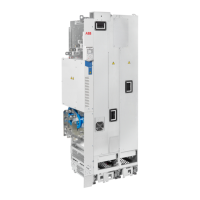■ Separate control cable ducts
Put 24 V DC and 230 V AC (120 V AC) control cables in separate ducts, unless the 24 V DC
cable is insulated for 230 V AC (120 V AC) or insulated with an insulation sleeving for
230 V AC (120 V AC).
24 V DC
230 V AC
(120 V AC)
230 V AC
(120 V AC)
24 V DC
Implementing motor and motor cable short-circuit and
thermal overload protection
■ Protecting the motor and motor cable in short-circuits
The drive protects the motor cable and motor in a short-circuit situation when the motor
cable is sized according to the nominal output current of the drive.
■ Protecting the motor cables against thermal overload
The drive protects the motor cables against thermal overload when the cables are sized
according to the nominal output current of the drive. No additional thermal protection devices
are needed.
WARNING!
If the drive is connected to multiple motors, use a separate overload protection for
each motor cable and motor. The drive overload protection is tuned for the total
motor load. It may not detect an overload in one motor circuit only.
North America: The local code (NEC) requires an overload protection and a
short-circuit protection for each motor circuit. Use, for example:
• a manual motor protector
• circuit breaker, contactor and overload relay or
• fuses, contactor and overload relay.
■ Protecting the motor against thermal overload
According to regulations, the motor must be protected against thermal overload and the
current must be switched off when overload is detected. The drive includes a motor thermal
protection function that protects the motor and switches off the current when necessary.
Depending on a drive parameter value, the function either monitors a calculated temperature
value (based on a motor thermal model) or an actual temperature indication given by motor
temperature sensors.
The motor thermal protection model supports thermal memory retention and speed sensitivity.
The user can tune the thermal model further by feeding in additional motor and load data.
86 Guidelines for planning the electrical installation

